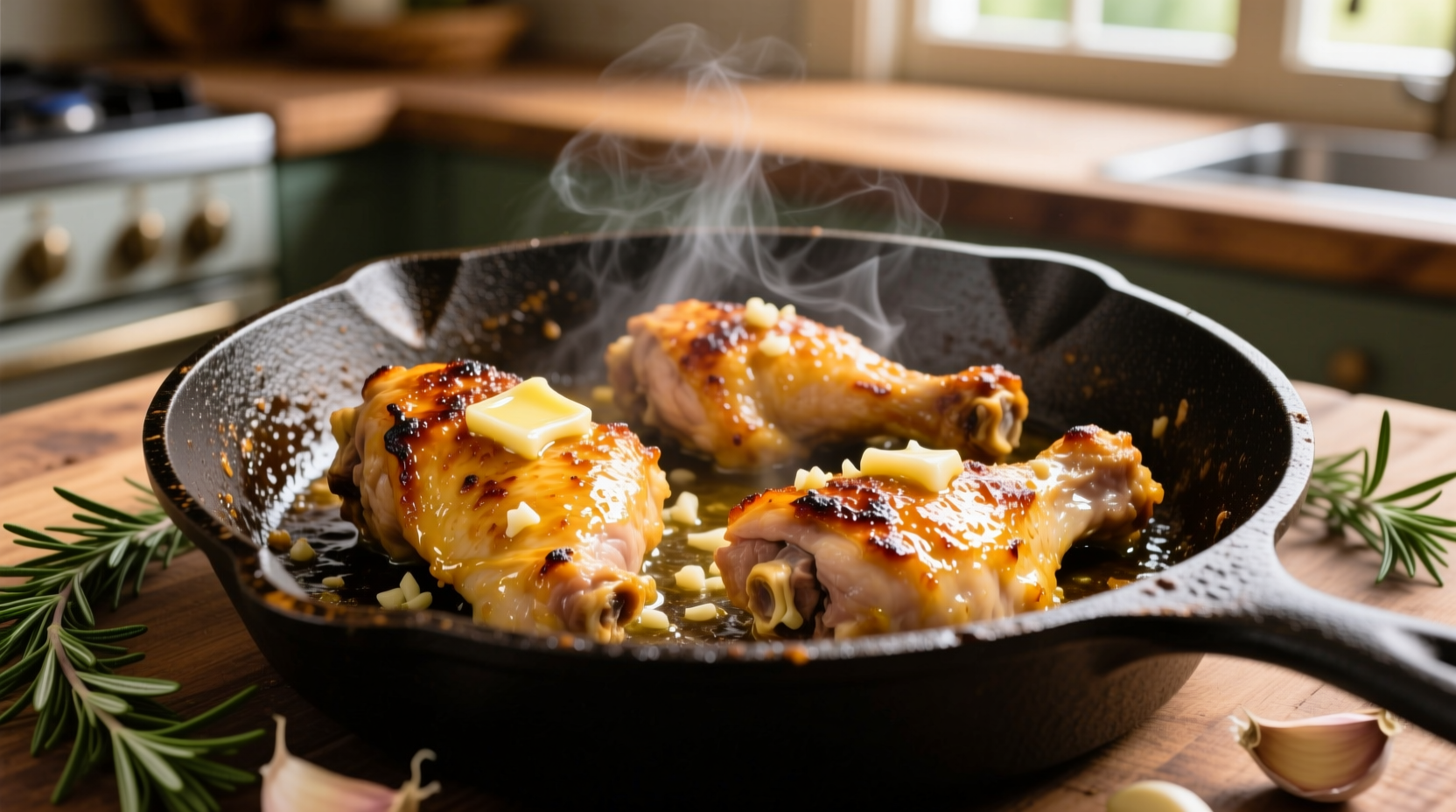This garlic chicken recipe delivers perfectly tender, flavorful chicken with rich garlic notes that infuse throughout the dish. Follow our tested method for juicy results every time—ready in under 30 minutes with simple ingredients you likely have on hand.
Garlic chicken remains a global favorite for good reason—it's simple, versatile, and delivers restaurant-quality results at home. But achieving that perfect balance where garlic enhances without overpowering requires understanding a few key principles. As a chef with extensive experience in spice chemistry, I've refined this recipe to maximize garlic's flavor potential while ensuring perfectly cooked chicken.
The Science Behind Perfect Garlic Chicken
Garlic contains allicin, the compound responsible for its distinctive flavor and aroma. When raw garlic is crushed or chopped, an enzyme reaction creates allicin. However, this compound breaks down quickly with heat. Our technique preserves maximum flavor by adding garlic at precise temperature points during cooking.
| Garlic Preparation Method | Flavor Profile | Best For Chicken Dishes |
|---|---|---|
| Raw, minced | Sharp, pungent | Sauces added after cooking |
| Gently sautéed | Sweet, mellow | Main cooking method |
| Roasted whole cloves | Caramelized, nutty | Whole chicken or roasting |
Essential Ingredients for Flavorful Garlic Chicken
The quality of your ingredients directly impacts the final dish. For authentic garlic chicken:
- Chicken: Boneless, skin-on thighs provide the most forgiving cooking margin and richest flavor absorption
- Garlic: Fresh cloves (never pre-minced) for optimal flavor development
- Olive oil: Extra virgin for raw applications, regular for cooking
- Acid component: Lemon juice or vinegar to balance richness
According to USDA food safety guidelines, chicken must reach an internal temperature of 165°F (73.9°C) to be safe for consumption. Using a reliable meat thermometer is essential for perfect results without overcooking.
Step-by-Step Garlic Chicken Recipe
Preparation (5 minutes)
- Pat 1.5 lbs chicken thighs dry with paper towels—moisture prevents proper browning
- Season generously with salt and freshly ground black pepper
- Mince 6 garlic cloves, keeping them separate from other ingredients until cooking
Cooking Process (20 minutes)
- Heat 2 tablespoons olive oil in cast-iron skillet over medium-high heat until shimmering
- Place chicken skin-side down in hot skillet, pressing gently for even contact
- Cook undisturbed for 6-8 minutes until skin achieves deep golden brown color
- Flip chicken and add minced garlic to the pan
- Cook garlic for 1 minute until fragrant but not browned
- Add 2 tablespoons butter and 1 tablespoon lemon juice, basting chicken continuously for 3-4 minutes
- Remove chicken when internal temperature reaches 160°F (it will carry over to 165°F)

Pro Tips for Restaurant-Quality Results
Professional kitchens achieve consistent results through these techniques:
- Garlic timing matters: Adding garlic too early causes burning; too late misses flavor infusion. The 1-minute sauté window maximizes flavor without bitterness
- Carryover cooking: Remove chicken at 160°F as temperature will rise 5 degrees while resting
- Resting is crucial: Let chicken rest 5 minutes before serving to redistribute juices
Variations for Different Dietary Needs
This versatile recipe adapts to various preferences:
- Dairy-free: Substitute butter with additional olive oil or avocado oil
- Low-sodium: Reduce salt by 50% and add extra herbs like rosemary or thyme
- Extra garlicky: Add 2 whole roasted garlic cloves to the pan during basting
Serving Suggestions
Pair your garlic chicken with complementary sides that balance the rich flavors:
- Steamed asparagus with lemon zest
- Garlic herb roasted potatoes
- Fresh arugula salad with shaved Parmesan
For optimal flavor pairing, serve within 15 minutes of cooking while the garlic aroma remains vibrant. The dish maintains best quality when consumed immediately, though leftovers store well for up to 3 days.
Storage and Reheating Guidelines
Proper storage maintains food safety and quality:
- Cool completely before refrigerating (within 2 hours of cooking)
- Store in airtight container for up to 3 days
- Reheat gently in skillet over medium-low heat with 1 tablespoon water to restore moisture
- Do not microwave, which makes chicken rubbery and diminishes garlic flavor
Frequently Asked Questions
How can I prevent garlic from burning while cooking chicken?
Add minced garlic after flipping the chicken, when the pan temperature has slightly decreased. Cook for just 1 minute over medium heat, stirring constantly. The residual heat from the chicken and pan will properly infuse the garlic flavor without burning.
Can I use pre-minced garlic from the jar for this recipe?
While convenient, pre-minced garlic contains preservatives that alter flavor and texture. Fresh garlic provides superior taste and proper chemical reactions during cooking. If you must use jarred garlic, reduce the amount by 25% and add it later in the cooking process to prevent bitterness.
What's the best cut of chicken for garlic chicken recipes?
Boneless, skin-on thighs offer the best balance of flavor, moisture retention, and garlic absorption. The higher fat content prevents drying during cooking, while the skin creates a flavorful barrier that locks in juices. For quicker cooking, boneless breasts work but require careful temperature monitoring to avoid dryness.
How do I know when garlic chicken is properly cooked?
Chicken is safely cooked at 165°F internal temperature. Insert a meat thermometer into the thickest part, avoiding bone. Visual cues include clear juices when pierced and firm but springy texture. Remember that chicken continues cooking after removal from heat, so pull it at 160°F for perfect results.











 浙公网安备
33010002000092号
浙公网安备
33010002000092号 浙B2-20120091-4
浙B2-20120091-4